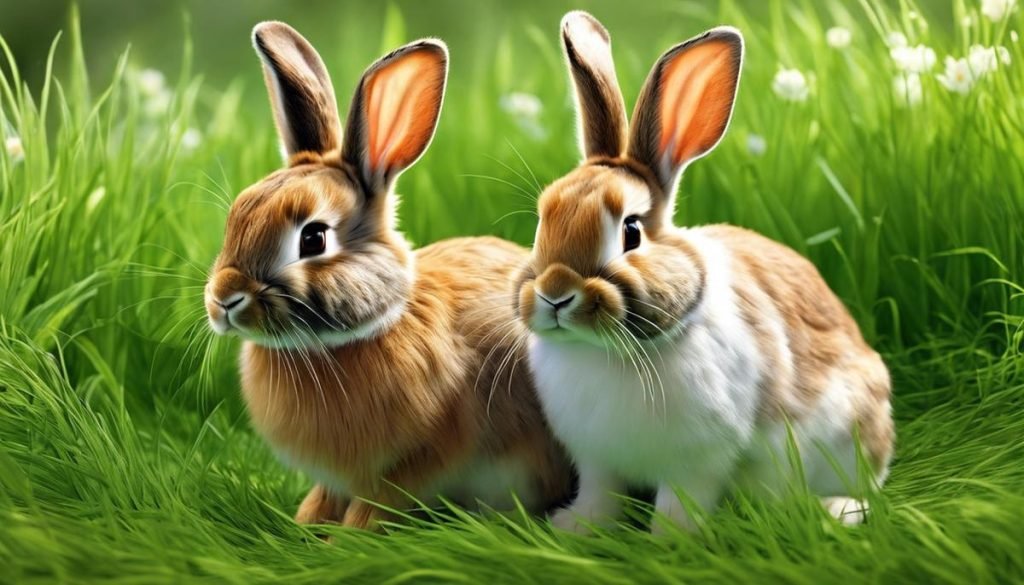In the intricate world of animal breeding, a question often arises in the minds of new pet owners – can a brother and sister rabbit have babies? Eager to demystify this concept, our discussion will dive into the depths of inbreeding, particularly concerning rabbits. We aim for an engaging discourse, maneuvering through the science and the basics of inbreeding in a family-friendly manner. Along the way, we will unmask the potential risks, consequences, and the toll it might take on pet rabbits’ overall health and wellbeing. We strive to create a platform that fosters the understanding and appreciation of responsible pet ownership, fostering healthier breeding practices, and ensuring long-term happiness for our furry friends.
Inbreeding in Rabbits: The Basics
Caring for a family of adorable bunnies can be a fun and rewarding experience, but understanding their genetic needs is crucial for their long-term health and happiness. One question a lot of rabbit owners ask is about inbreeding, especially amongst siblings. It’s an important topic to delve into and has great significance when it comes to maintaining a healthy bunny clan.
In the context of rabbits, inbreeding involves the mating of rabbits who are closely related to each other, such as siblings. Much like in other animals and indeed in human beings, inbreeding among rabbits carries potential risks. These include an increase in the likelihood of health issues and genetic defects. The negative effects of inbreeding are due to the close relatives sharing a significant proportion of similar genes. Over time, repeatedly breeding closely related rabbits can result in some of these harmful traits becoming more pronounced and sometimes even leading to a decrease in overall vitality or longevity.
Therefore, when planning to breed rabbits, it’s advisable to seek rabbits from different families. Doing so boosts genetic diversity, which can foster healthier and stronger bunny offspring. If your household is blessed with a multitude of bunnies, learning about their genetic needs can be just as pivotal as providing proper diet, love, and space to hop about. After all, making educated decisions rooted in care is at the heart of fostering a healthy home for our little furry family members.

Risks and Consequences of Inbreeding
Understanding the consequences of a brother and sister rabbit pairing on their offspring involves acknowledging the potential escalations of these genetic red flags.
When close relatives, in this case, brother and sister bunnies, mate, it has an adverse influence on the vitality and lifespan of their offspring – those poor baby bunnies are more likely to suffer from health complications, as hazardous traits may not only be a part of their genetic makeup but might even be emphasized.
Digging deeper, these potentially harmful traits can include pesky physical defects and unpredictable, gravely behavioral issues. Plus, it can even lead to an increased susceptibility to diseases, which can make their days quite tough.
Deleterious recessive genes that might have stayed dormant otherwise, can easily come into play in the offspring of such unions. Furthermore, this pairing could lead to lower fertility rates, which can stagnate the rabbit population in your home or even lead to its eventual decline.
The overall message here is to tread wisely when planning to expand your bunny brood. Humans play a significant role in the lives of these small, adorable creatures, and it significantly impacts the quality of life they lead.
And while this information doesn’t mean you love your bunnies any less, it just means you’ve got to show your love differently – a tough but wise and required decision that’s all part of being a responsible bunny parent.

Effects of Inbreeding on Pets
Breeding sibling rabbits can not only impact the health of the offspring but also their overall vitality and lifespan, due to the sharing of closely related genetic material. The offspring are more likely to inherit the same recessive genes from both parents, which can lead to various health complications. It’s not uncommon to see physical defects emerge, and these can range from minor deformities to significant drawbacks that can drastically hinder their quality of life.
Behavioral issues can be another unwelcome result of inbreeding among rabbits. Because genes also influence behavior, unfavorable traits such as aggression or tremendous shyness can become more pronounced. Rabbits born from inbreeding also tend to have a higher susceptibility to diseases due to their weakened immune systems and could become more prone to developing chronic health issues.
Breeding rabbits from the same family can also result in lower fertility rates amongst the offspring. The issue of lowered fertility could cause serious consequences for the overall rabbit population if not addressed. Infertile rabbits struggle to reproduce, making it harder to maintain or increase the number of these little critters.
In the end, our decisions as bunny parents greatly impact the quality of life these adorable creatures experience. Adopting a responsible approach to their breeding can help us create a healthier, happier environment for them. Remember, every bunny deserves a love-filled, healthy life. As custodians and caregivers, we must make the decisions that will ensure they get just that. Just like the food we put in their bowls and the love we shower, the genetic blueprint we nurture plays an equally important role in shaping their world. Your ACTIONS breed RESULTS; in rabbit parenting, consider this both a privilege and a responsibility.

Promoting Healthy Breeding Practices
Fair and mindful breeding practices can bring remarkable improvements to the overall health, vitality, and longevity of rabbit populations. A vital part of this involves obtaining rabbits from a variety of genetic backgrounds to maintain a rich gene pool. This not only reduces the risk of inherited diseases but also results in a more robust and active bunny community. It’s like each bunny brings its own “toolbox” of different strengths, resilience, and traits to the mix, creating healthier offspring with higher fertility rates.
Another important aspect of better rabbit breeding practices is a thorough vet check-up prior to mating. A veterinarian’s clearance forms the basis of a safe breeding plan that takes into consideration both the physical and mental health of the rabbits. A healthy rabbit is a happy one, and the assurance that we aren’t unknowingly passing on any diseases or health complications sustains the longevity and quality of life for the whole brood.
Lastly, one’s own consciousness and commitment as a bunny parent can have incredible impacts on the well-being of these adorable creatures. Take the time to pick a perfect partner for a pet rabbit; just like humans, rabbits tend to mate better when they are compatible. Maintaining ethical breeding practices and prioritizing quality over quantity will inherently improve the quality of life for every rabbit involved while shaping a resilient bunny community that bursts with vitality and good health.
Remember, just one responsible decision can dramatically improve the life of these endearing creatures and play an essential part in creating a happier and healthier rabbit world.

Engaging in informed and responsible pet ownership directs us to healthier and happier experiences with our beloved rabbits. As we’ve discussed, inbreeding bears an array of potential risks and consequences including an increased vulnerability to various diseases and reduced lifespan in pet rabbits. Therefore, recognizing and promoting healthier breeding practices is our utmost duty as pet owners. In essence, preserving the health, happiness, and prolonging the lives of our rabbits is not just about choosing the right food or providing an ample living space, but goes beyond – to making informed decisions about their breeding. Let us embrace the responsibility of pet ownership, fostering a harmonious relationship with our furry friends.



